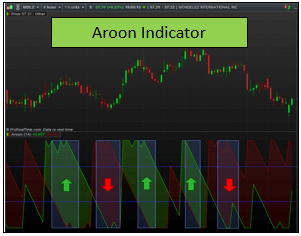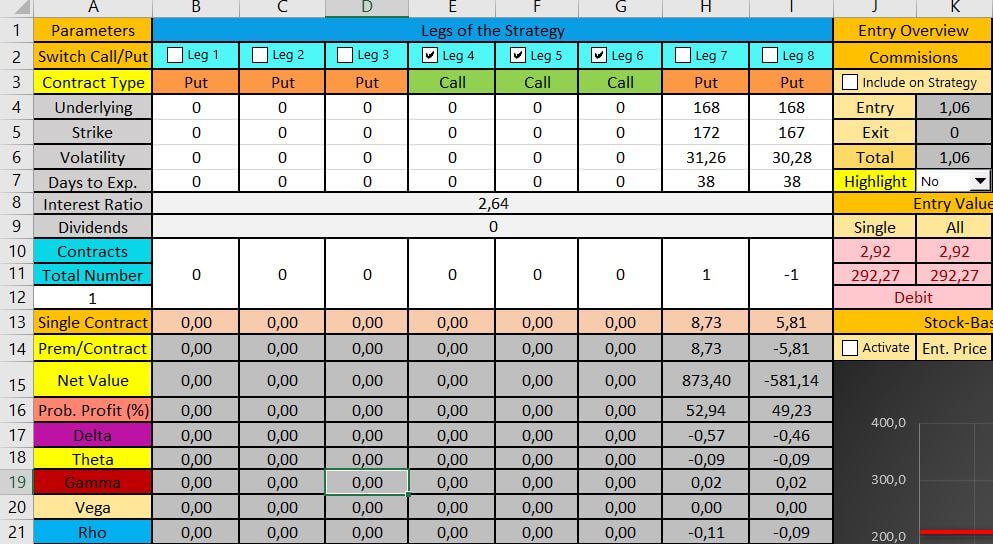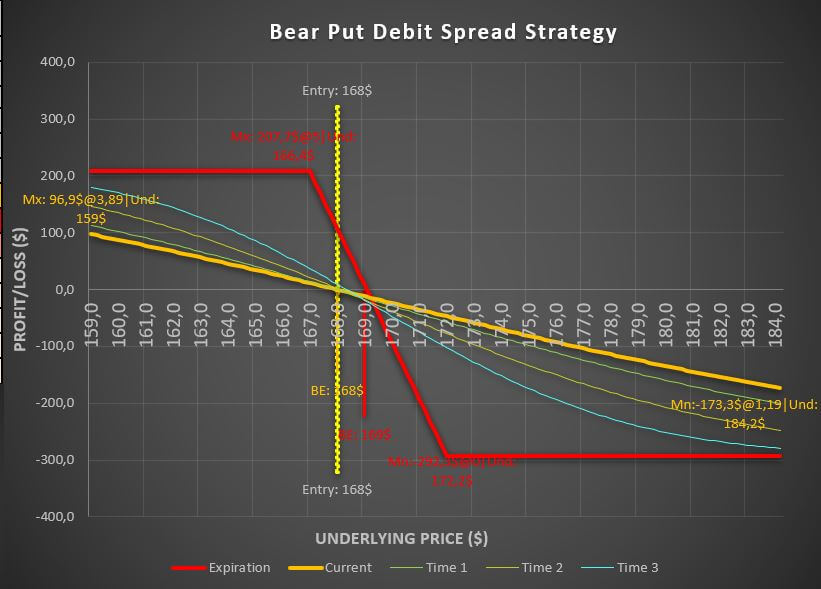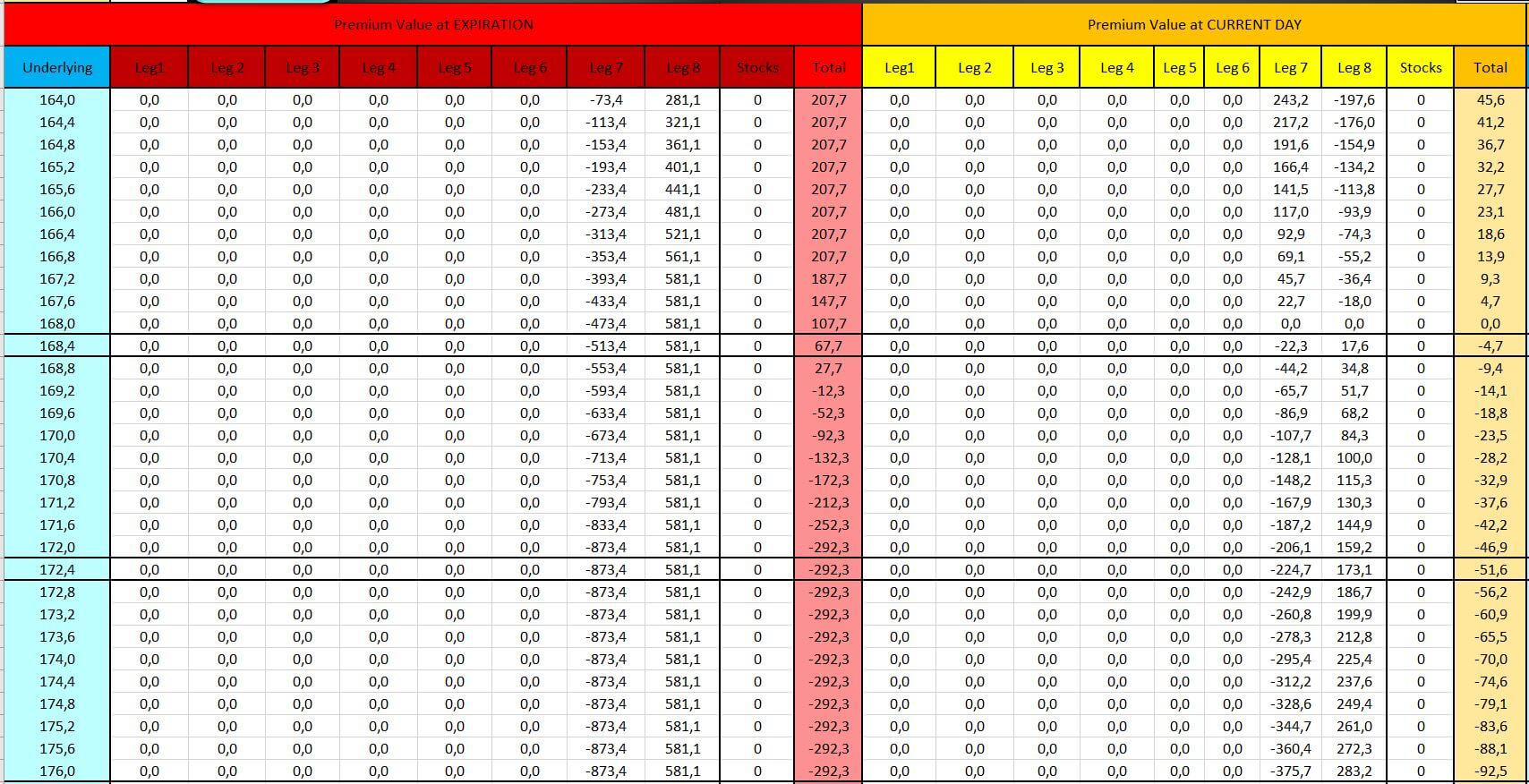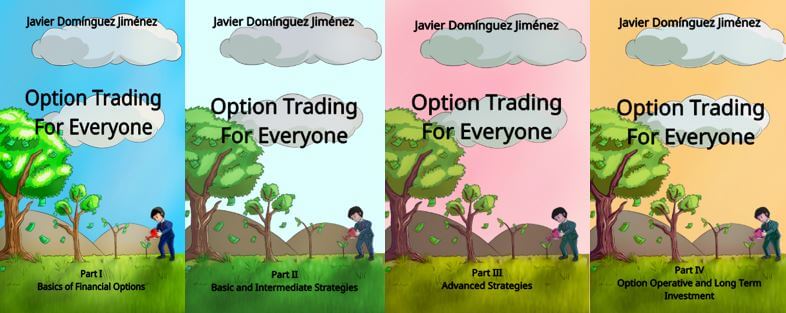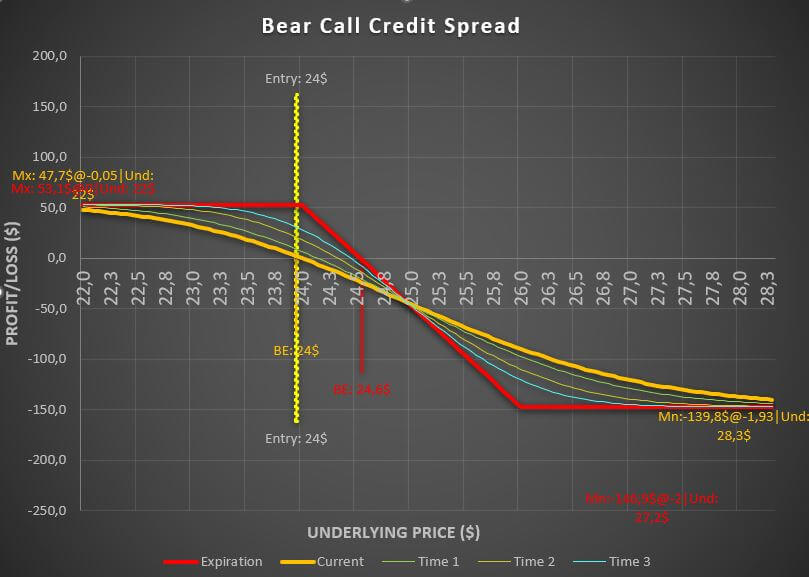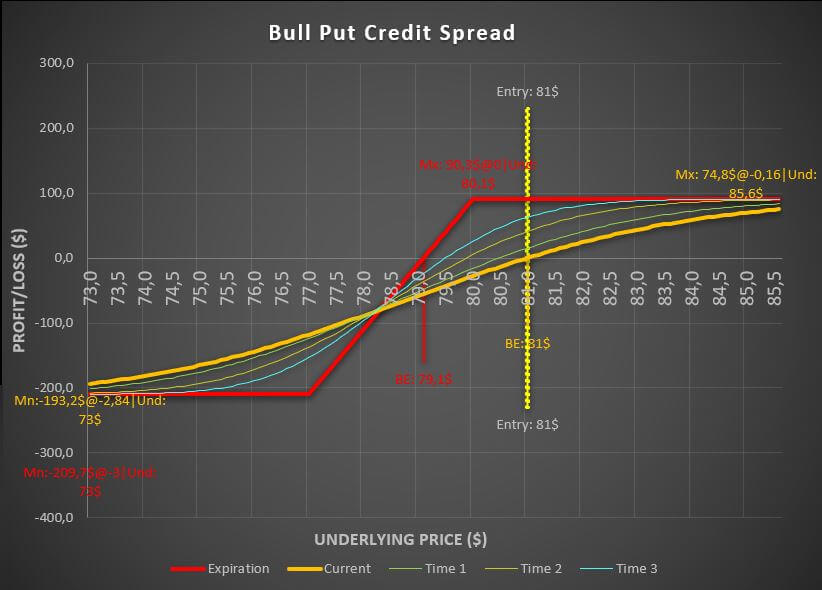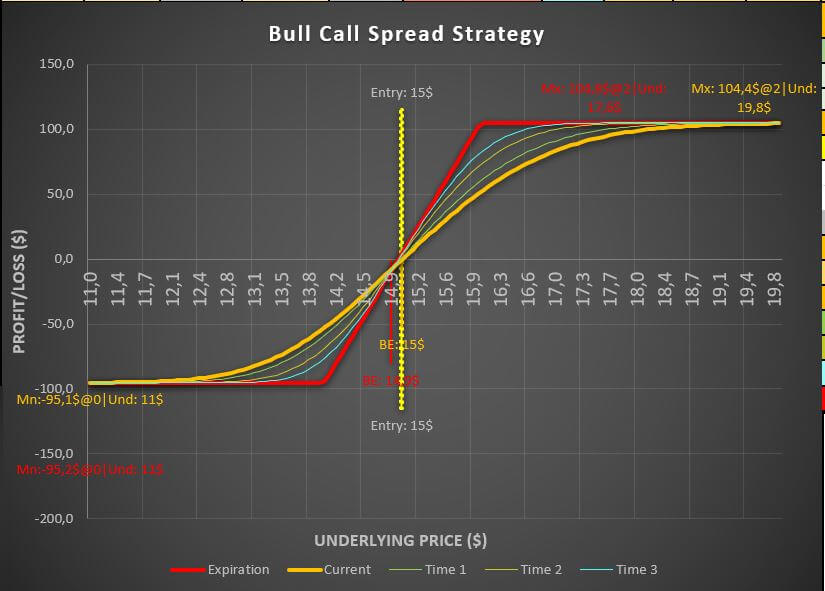Bear Put Spread – A Unique Way to Reduce The Money Paid When Buying Bearish Options
The bear put spread is another option spread strategy that we should take into account when we want to reduce the premium we would pay for buying puts.
In this article, we will see what is a bear put debit spread, we will analyze the risk-reward ratio when the expiration date arrives, and we take a look at the bear put spread payoff table, as well as some examples to help you understand how it works.
Table of Contents
What is a bear put spread strategy in options trading?
The bearish put debit spread strategy consists of a trade we can perform by buying a put option contract at a certain strike price while selling another with a lower strike price.
As with the other spreads, this strategy has a limited profit and loss mechanism, so we will eliminate many of the drawbacks of selling naked put options.
When to use the bear put debit spread strategy?
The bear put spread option strategy is used when we expect the underlying price to decrease in value over time within the expiration period.
To help us identify is the asset is in a bearish trend or not, we highly recommend you to use some kind of technical indicator, such as the Aroon indicator.
The biggest advantage in this strategy is that we are reducing the premium we would have to pay for a single put option if we wanted to open a bearish position.
However, the disadvantage is we are eliminating the unlimited side of the profits because of the contract we are selling.
Do you need a Calculator that helps you create and analyze any option strategy in record time? |
How the bear put spread is composed?
The position consists of buying a put contract with a strike price that is above the strike price of the second put contract that is sold.
In this way, every time we open a trade, we will be paying some money, since the strike we buy is much more expensive than the one we sell.
This is why the bear put spread is known as a debit spread, just like its counterpart, the bull call spread, since, as we said, we are paying in both option strategies to open the position. Let us take a look at an example to see how it works.
Bear put spread example
Let us suppose we want to open a bear put spread over the company General Dynamics since, due to the 2020 crisis, the prices will fall substantially, together with the whole market.
Assuming that the underlying is currently at $168, we have decided to open a bear put spread strategy, which will consist of buying a put contract whose strike price is $172 and then sell another put contract with a strike price of $167, both for an expiration date of 38 days.
Bear put spread calculator
Therefore, we will have to pay $873 for the bought strike, while we will receive $581 for the sold strike.
Thus, the bear put debit spread will result in a total debit of $292 for each of the bear put spreads that we decide to open.
Bear put spread payoff table
In this strategy, we will profit as the underlying lose its value while the bear put debit spread will be generating a loss as the asset value increases.
Since this option strategy is based on the fact that buying the options is the predominant force, the bear put spread inherits some of the disadvantages of the option buying, such as the negative effect of time decay.
This means that as time goes by, our position will lose value, and therefore, the bear put spread payoff table will be worse. When the expiration date arrives, it will look like this.
Bear put spread payoff diagram
Breaking down the put debit spread option strategy
As you can see, we have two scenarios at the extremes positions.
If the underlying falls below the lowest strike, i.e., $167, the put contract we have bought will start to increase its value. In contrast, the put we have sold will multiply its loss more and more, resulting in a price counterbalancing effect, maintaining a maximum net profit of $208.
If the underlying increases above the sold strike price of $172, no matter how much the value increases further, the bought put will no longer have any value. At the same time, we will keep the premium of the sold put in our pocket, resulting in a maximum equivalent to the premium we paid when we opened the trade, i.e., $292.
Bear put spread payoff table
However, if underlying falls between the two strikes of the bear put spread, we will enter the area of the curve where we should take a better look to know the result of the trade.
The break-even point would be obtained by subtracting the premium we have paid when opening the spread to the highest strike. In other words, 169.1 $ is our break-even.
Bear put spread margin requirement
In this case, the worst possible scenarios is that the underlying does not move to the downside.
In these cases, we will lose all the money we paid when we decided to open the trade.
This is the reason why the bear put spread margin requirement is zero, because we can only lose the money we placed to open the trade. In other words, we will be able to open this trade with a cash account.
Last words about the debit bear put spread
As you can see, this strategy tries to limit the price we have to pay when we buy a put option contract since it reduces it by selling a put option at a lower premium.
The most significant advantage of the bear put spread strategy is that we will pay less than buying a simple put. Still, its main disadvantage is that we will limit the infinite profit side of the operation because of the contract we sold.
